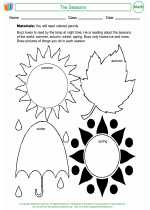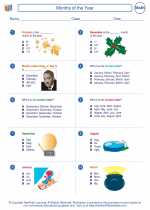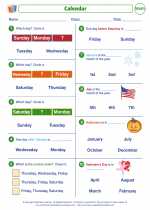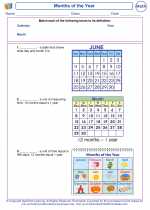Months of the Year
The months of the year are the 12 divisions of the calendar year. Each month has its own name and is used to organize and track the passage of time.
January
January is the first month of the year. It has 31 days and is known for New Year's Day.
February
February is the second month of the year. It has 28 days, or 29 in a leap year. It is known for Valentine's Day.
March
March is the third month of the year. It has 31 days and is associated with the beginning of spring.
April
April is the fourth month of the year. It has 30 days and is known for April Fool's Day.
May
May is the fifth month of the year. It has 31 days and is associated with flowers and Mother's Day.
June
June is the sixth month of the year. It has 30 days and is associated with the beginning of summer.
July
July is the seventh month of the year. It has 31 days and is known for Independence Day in the United States.
August
August is the eighth month of the year. It has 31 days and is associated with the end of summer.
September
September is the ninth month of the year. It has 30 days and is associated with the beginning of autumn.
October
October is the tenth month of the year. It has 31 days and is known for Halloween.
November
November is the eleventh month of the year. It has 30 days and is associated with Thanksgiving.
December
December is the twelfth month of the year. It has 31 days and is known for Christmas and New Year's Eve.
.◂Math Worksheets and Study Guides First Grade. Months of the Year

 Activity Lesson
Activity Lesson
 Worksheet/Answer key
Worksheet/Answer key
 Worksheet/Answer key
Worksheet/Answer key
 Worksheet/Answer key
Worksheet/Answer key
 Worksheet/Answer key
Worksheet/Answer key
 Vocabulary/Answer key
Vocabulary/Answer key
